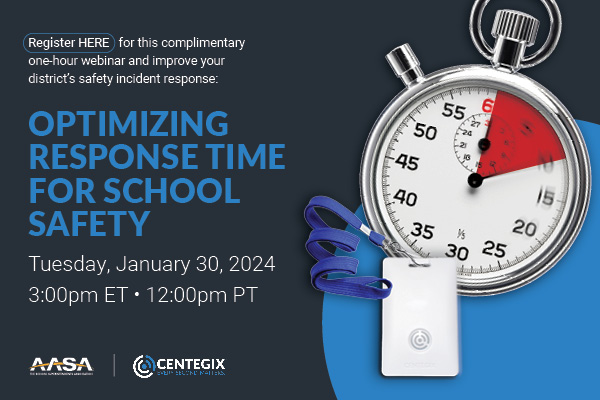Rethinking School Safety
March 01, 2023
A veteran education leader sees relationships, partnerships, guardianship and ownership as central to ending the heartbreak of school shootings
A defining moment in my career as superintendent of a rural school district in Kentucky took place on Jan. 23, 2018. Administrative colleagues had joined me in a professional learning session when a cacophony of text messages began to relay details that no educator wants to hear.
News was emerging from Benton, Ky., a neighboring school community, about a shooting at Marshall County High School. It was literally unfolding right before our eyes.
A shooting at a school is every education leader’s worst nightmare, and this one hit close to home.This Content is Exclusive to Members
AASA Member? Login to Access the Full Resource
Not a Member? Join Now | Learn More About Membership
Feds Easing Medicaid Eligibility While Spurring Mental Health Support
By Sasha Pudelski
Last June, President Biden signed into law the first major gun safety legislation passed by Congress in nearly 30 years. In response to the tragedy at Uvalde Elementary School, the law, known as the Bipartisan Safer Communities Act, contains new funding for school safety and mental health personnel and programs.
The new legislation also makes it easier for districts to participate in the Medicaid program and receive reimbursements for the school mental health services they deliver to Medicaid-eligible children.
Of particular interest to superintendents is the $1 billion in competitive funding that will be distributed to high-needs local education agencies through a program called the Stronger Connections Grant program. State education agencies may set criteria for which school districts receive the funding and how much they receive.
Guidance released in late 2022 by the U.S. Education Department indicates states may define high-needs local districts as those with a high rate of poverty and with one or more of the following characteristics: a high ratio of students to mental health professionals and/or high rates of chronic absenteeism, exclusionary discipline, referrals to the juvenile justice system, bullying/harassment, or community and school violence. States can set their own criteria.
Federal Emphases
While the money can be used for limited school facilities improvements such as installing door locks, the U.S. Department of Education is urging districts to instead invest in inclusive and equitable practices that meet the social, mental and physical needs of students. Specifically, the department is prodding school districts to use the money to pay for professional development, comprehensive emergency management planning, and behavioral and trauma-informed mental health supports for students.
In addition, two competitive grant programs will provide opportunities for districts to add mental health personnel and increase mental health services for students over the next five years.
The first, known as the School-Based Mental Health Grant Program, offers competitive funds to increase the number of credentialed school-based mental health service providers delivering services to students in districts with demonstrated need.
The second is the Mental Health Service Professional Grant Program, which offers competitive grants to support innovative partnerships that train school-based mental health services providers for employment in schools and districts.
The grant program addresses the insufficient supply nationwide of school-based mental health professionals to meet the needs of students. The partnerships must include (1) one or more high-needs local or state education agencies on behalf of one or more high-needs school districts, and (2) one or more eligible institutions of higher education.
Forthcoming Assistance
Finally, the law will reduce administrative barriers to participating in the school-based Medicaid program. It requires the Centers for Medicare and Medicaid Services to issue a new claiming guide that will make it easier for small and rural districts to bill Medicaid for mental health services.
The new guide will be accompanied by a new technical assistance center that will help districts maximize their Medicaid reimbursement and ensure compliance with Medicaid rules and regulations. The guide and assistance center are expected to roll out this spring.
Sasha Pudelski is director of advocacy for AASA in Alexandria, Va. @SPudelski
Advertisement
Advertisement
Advertisement
Advertisement



